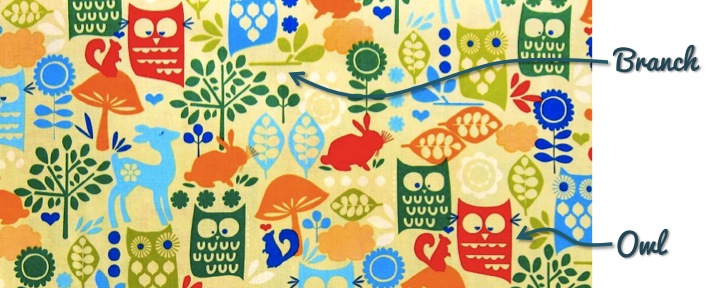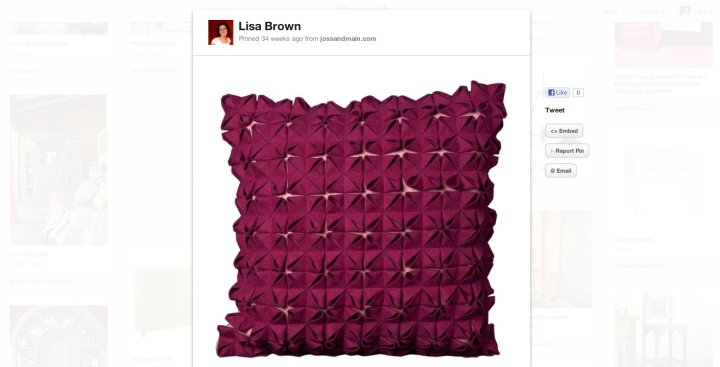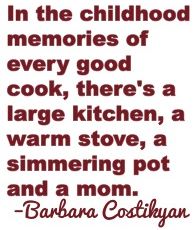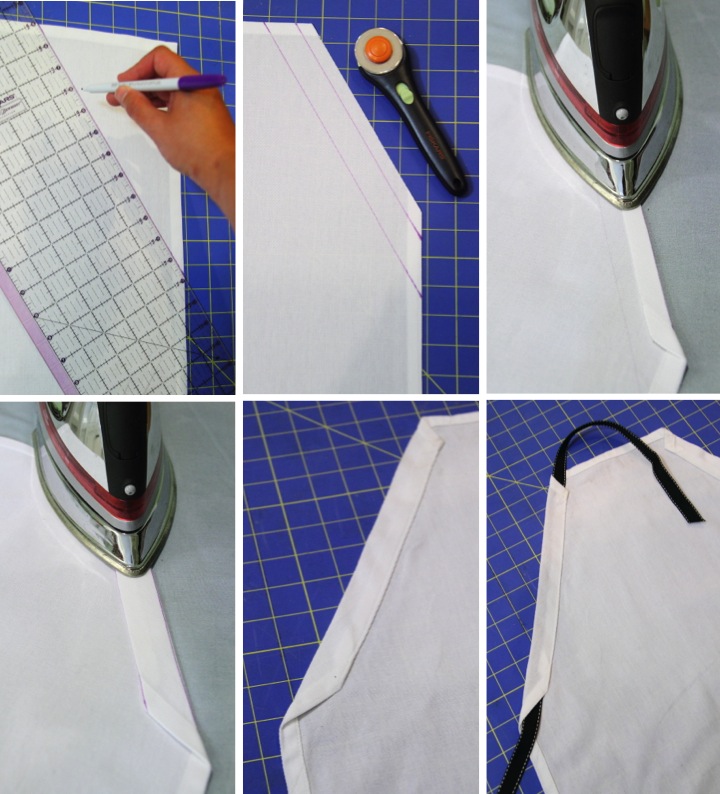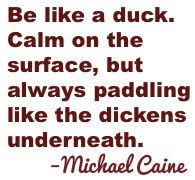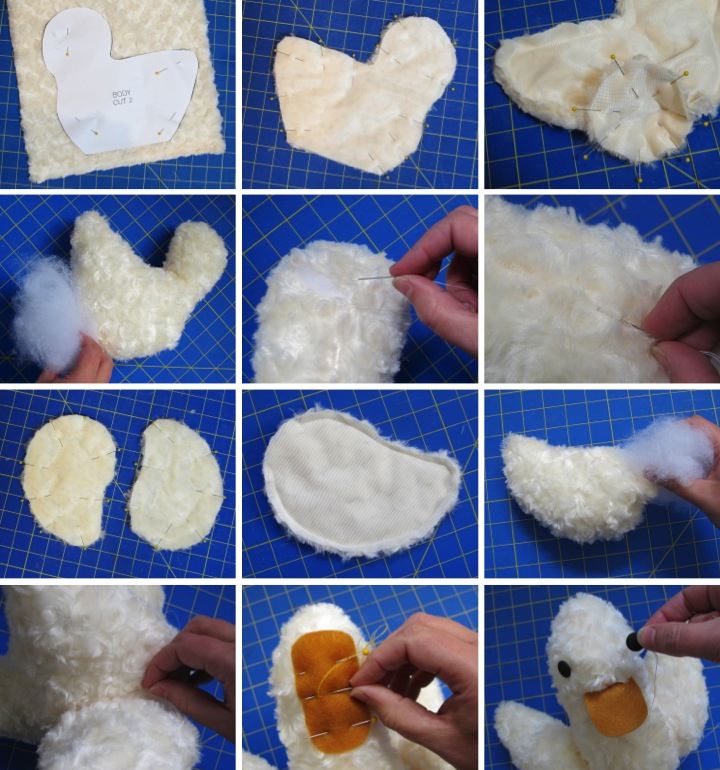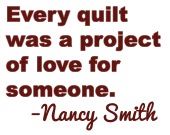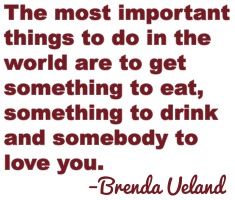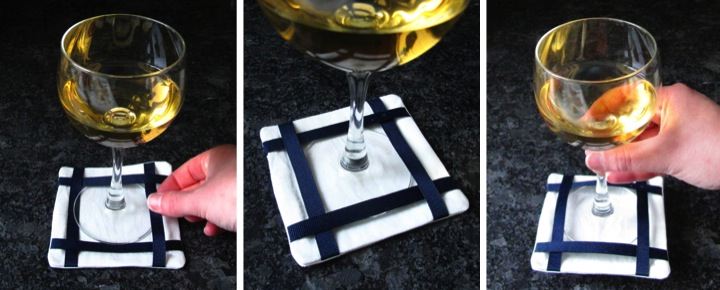 For Christmas this year I made Frank's mom a lavender sachet with her first initial embroidered on the front. I had some lavender that I dried from my garden so I thought that this was a perfect way to use it.
For Christmas this year I made Frank's mom a lavender sachet with her first initial embroidered on the front. I had some lavender that I dried from my garden so I thought that this was a perfect way to use it.
To make this sachet I used dried lavender, white embroidery linen, a fat quarter of cotton for the binding and backing, pearl cotton embroidery thread, white thread, a 4" embroidery hoop, an embroidery needle, a disappearing ink fabric marker, scissors, pins and my sewing machine. If you don't have a sewing machine you could make this completely by hand, it would just take a bit longer.
To start I cut a square of white embroidery linen a few inches larger than I wanted the final sachet to be, about 8" square. I then found a capital J in a script that I liked and traced it onto my linen with a disappearing ink fabric marker.
To be honest I just sized it to the way I wanted on my computer screen, held the linen over the screen and then traced it from there. It was not the most elegant solution but it was quick and easy since the screen acted as both my pattern and light box. After that I put the linen in a 4" embroidery hoop to hold the fabric taught while I embroidered the initial.

To give the initial a little dimension I decided I wanted to embroider it with a padded satin stitch, a technique where you fill in a shape with stitches before satin stitching over it in order to make the design raised.
I started by using some pearl cotton in a lavender-grey color to back stick around the outline that I had traced on the linen and then continued to fill in the design.
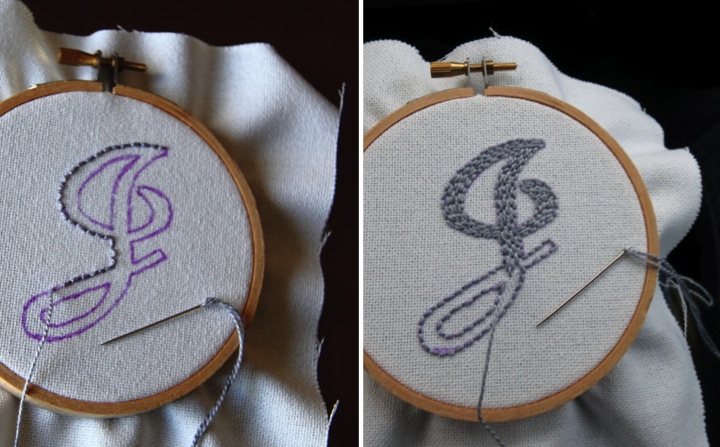
Once my initial was filled in I satin stitched over it, easing around the curves. With the embroidering complete I popped the linen out of the hoop, used a little water to remove any remaining trace of the marking ink, pressed the linen flat and trimmed it down to a 5" square centered on the initial.
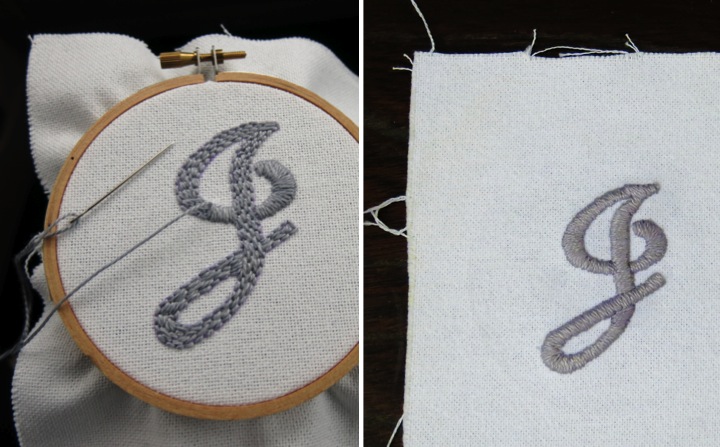
Next I made some binding for the sachet. My lavender-grey patterned fabric that I picked out was from a fat quarter so I needed to join some fabric to make the binding long enough. I cut two strips 22" wide and laid them right sides together perpendicular to each other. I then sewed on the diagonal to join them. After pressing the seam open and clipping the excess fabric I had a nice join. To complete the binding I folded it in half with the right side out and then pressed it flat.
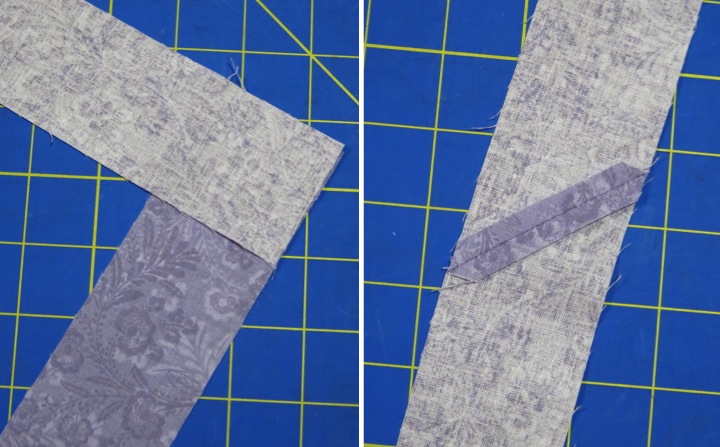
The next step was to attach the binding to the linen. I pinned it to the linen with the rough edge lined up to the outside edge of the linen. At the corners, I laid it across the top edge, folded the binding back on itself on an angle so it would line up with the side, and then folded it back down along the side edge. It is a little tough to describe in words, but I think it is clear in the pictures. I left several inches of excess tails along the bottom to sew together later.
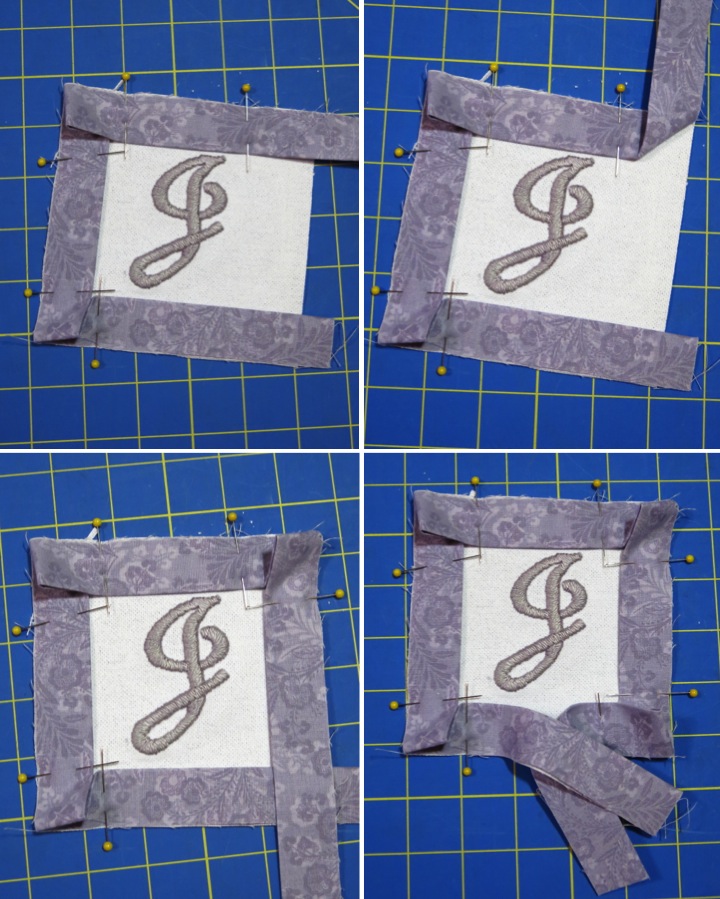
I sewed around the perimeter of the linen with a 1/4" seam. At the corners I did not sew to the edge and moved the flap of binding as I went so as to not trap the extra fabric in the corners. Also, I started and stopped fairly close (less than 1") to the corners on the bottom edge so that I had long enough tails to join my binding on the bottom.
To do the join, I opened up the binding and used my disappearing ink fabric marker to draw a line where the tails would meet. I pinned the tails together and then sewed along the line. I finger pressed the seam open and trimmed the tails. I then folded the binding back down and sewed the last section of binding to the linen.
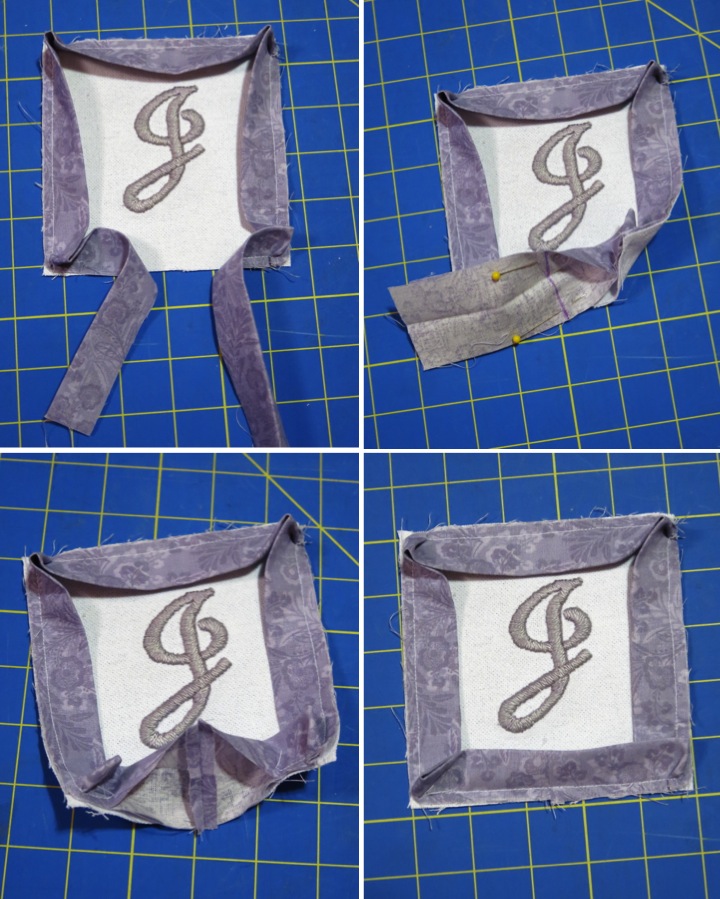
Next, I cut a 5" square out of my lavender-grey patterned fabric for the back. I placed my linen face down on my work surface, layered the back fabric on top, face up, and then pinned it all together. I then sewed around the edge, just inside the stitch line from the binding, leaving about a 2" opening at the bottom to add the lavender.
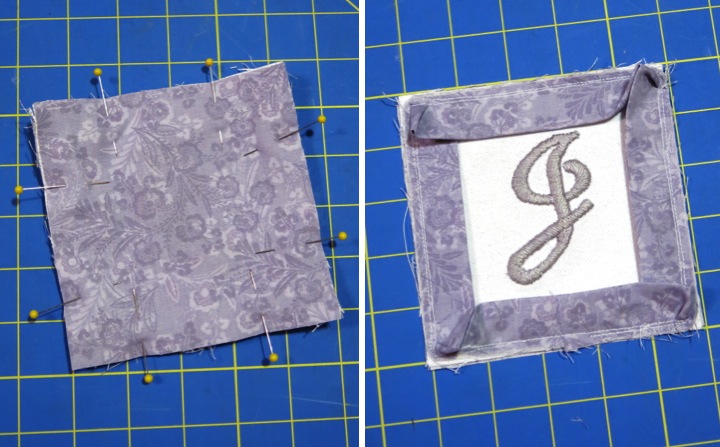
Since it would be hard to press once it was filled, I pressed the binding out flat now that my machine stitching was complete.
To fill the bag I used one of my disposable icing decorating bags to act as a funnel for the lavender, but you could use a regular funnel or make a cone from paper. Since I made the sachet rather large, I had to augment the lavender from my garden with some store bought in order to fill it. Once the sachet was full I hand stitched the opening shut.
To complete the sachet I folded the binding over the rough edge and used a blind stitch to hand sew the edge of the binding to the back of the sachet. For the corners I tucked the extra fabric under for a nice clean look.

I am quite happy with how the sachet turned out. I think it looks so pretty and smells divine. Leading up to Christmas I had it on my dining room table and gave a light scent to the air. The best part was that Frank's mom loved it which is the most important thing of all.

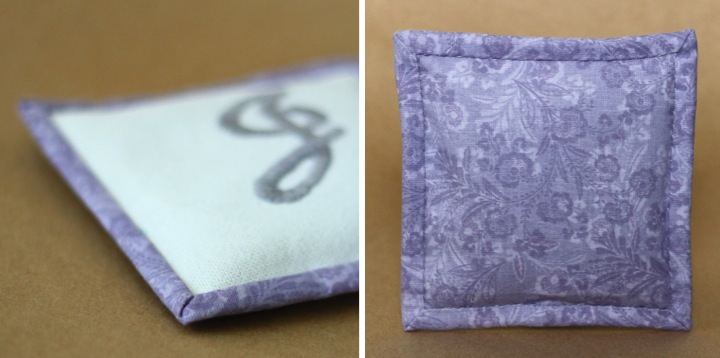
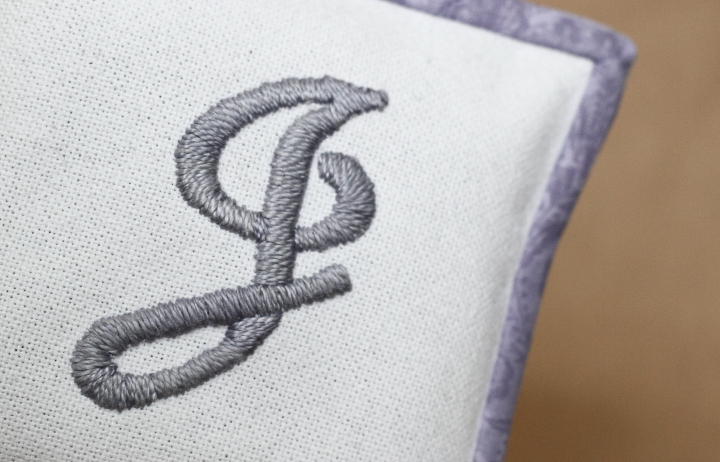

 Monday, June 9, 2014 at 8:29AM
Monday, June 9, 2014 at 8:29AM
